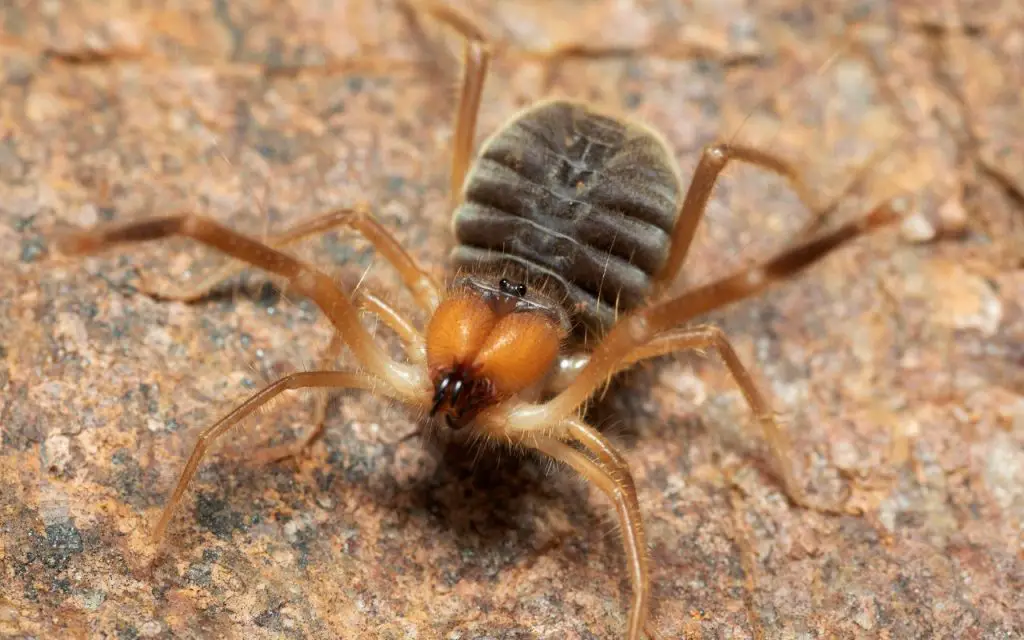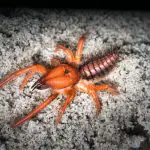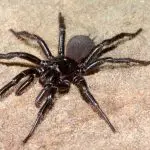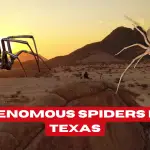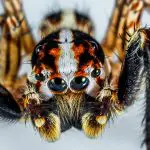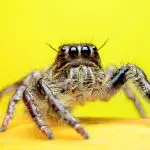Where does the Camel Spider live? This peculiar arachnid lives around the world, but has a strong preference for certain habitat types…
Camel spiders are found in many different parts of the world but are most commonly found in the deserts of North America and Africa. They can also be found in other hot, dry climates, such as deserts of the Middle East, including Arabia, Iran, and Afghanistan.
According to National Geographic, the Gulf War in the early 1990s was when the camel spider first became well-known in the West. Their notoriety only increased after the 2003 US invasion of Iraq.
They then became a phenomenon on the Internet. The spiders seemed to be the size of a human leg in forced-perspective images.
But according to entomologists, even in the Middle East, when they are quite enormous, they could be easily smashed beneath a person’s foot. Read on to learn fascinating information about camel spiders, including why they aren’t technically spiders.
How big is a camel spider?
An average camel spider is between a small and medium-sized spider, measuring between 6 and 10 cm (2.4 and 3.9 in) in length. This is nowhere near as big as some real spiders.
The Goliath Birdeater for example, which is indigenous to the jungles of northern South America, is the biggest spider in the whole world. This spider may reach a maximum length of 11 cm (4.3 in) and a maximum leg spread of 30 cm (12 in). Several specimens of this spider weigh above 170 g, making it one of the biggest species (6 oz).
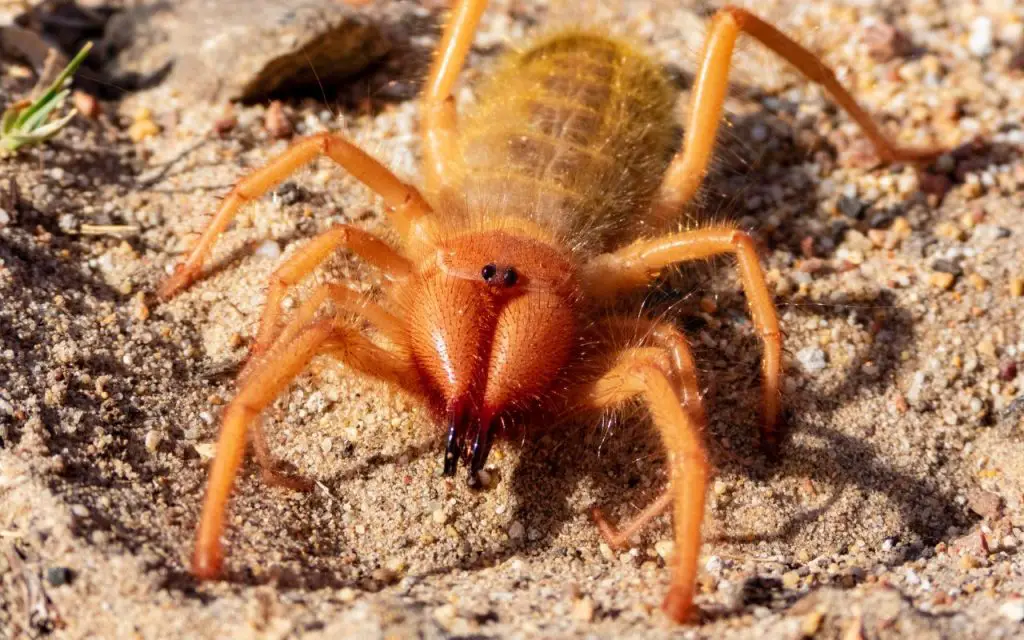
Biggest camel spider
The Middle East is home to the biggest camel spiders, which may measure up to 6 inches across at the widest point of their legs. Additionally, their bodies may be exceedingly long and lean, measuring 3 inches from their belly to their jaw.
Consequently, these animals were seen by US forces stationed in the Middle East, maybe for the first time. Camel spiders are known for their quickness.
They seem to swarm around while moving swiftly. Camel spiders may reach speeds of up to 10 miles per hour.
So, if you’re standing guard at night and something speeds by at ten mph, I’m sure you’d be astonished! When you first encounter one, you may be taken aback by its size.
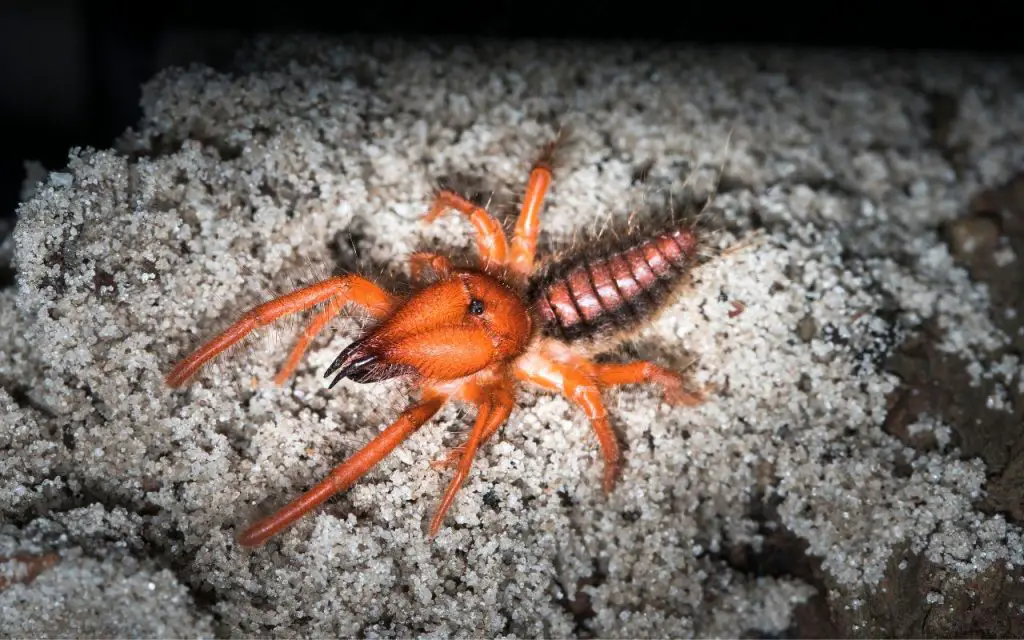
Is a camel spider a spider?
The notion that these spiders ate the insides of a camel’s stomach gave rise to their name. This is not correct. A camel spider is far too little to sedate a huge creature like a camel. Even though the myth has been disproved, the name has persisted with it.
Camel spiders are not spiders but are arachnids. They are closely related to scorpions, whip scorpions, and vinegaroons. Camel spiders are also known as wind scorpions and sun spiders.
Solifuges, camel spiders, wind scorpions, and sun spiders are all Arachnida order Solifugae members. The order is made up of over 1,000 known species divided into 147 genera. They are neither actual spiders nor true scorpions (order Scorpiones), despite their popular names (order Araneae).
The vast majority of Solifugae species are arid-dwellers that feed insects and other tiny ground organisms. The biggest species’ legs may grow to be 12-15 cm (5-6 in) long. Many urban tales overstate the Solifugae’s size, speed, and potential threat to humans.
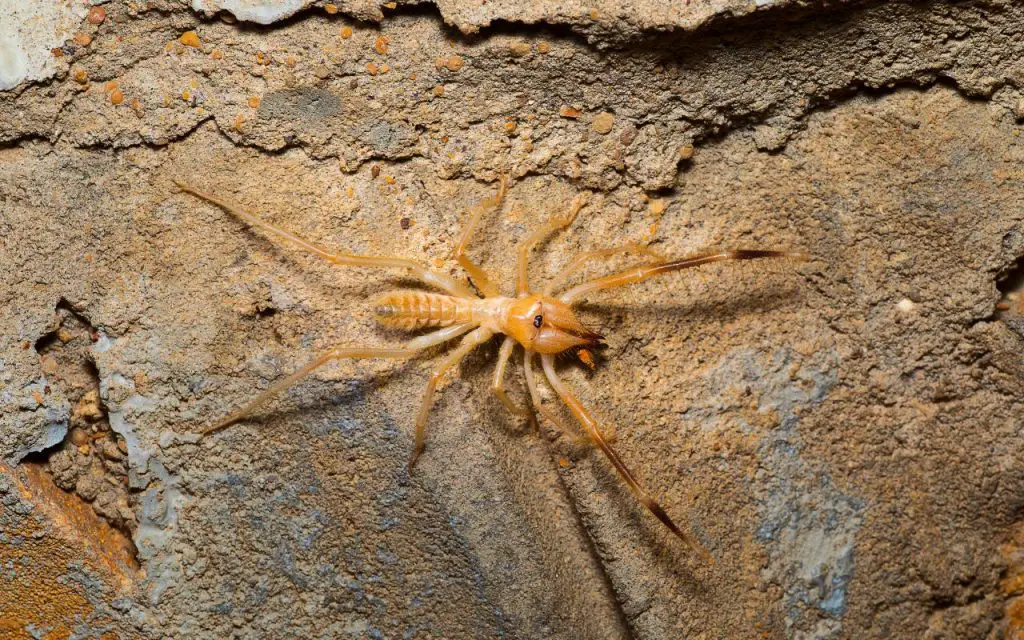
Camel spider genus
The Camel spider is a member of the family Arachnida and the order Solifugae. There are over 1,000 species of camel spiders in the world, making them one of the largest groups of arachnids. The largest Camel Spider genus is possibly the Eremobates genus, which occurs in the American southwest and Mexico.
It’s hard to tell for sure though, given that new Camel Spiders are being discovered evey year. In fact, the author has a huge amount of difficulty trying to ID them in the wild.
They are found in warm, dry climates such as the deserts of Africa, the Middle East, and Central and South America. Camel spiders are not true spiders but are more closely related to harvestmen and mites.
Camel spiders are nocturnal hunters that stalk the desert floors in search of insects, lizards, and small mammals to eat.
Camel spiders are also known for their large jaws, up to one-third the size of their body. These jaws are powerful and can crush prey with ease. They are quick and agile and can run up to 10 miles per hour.
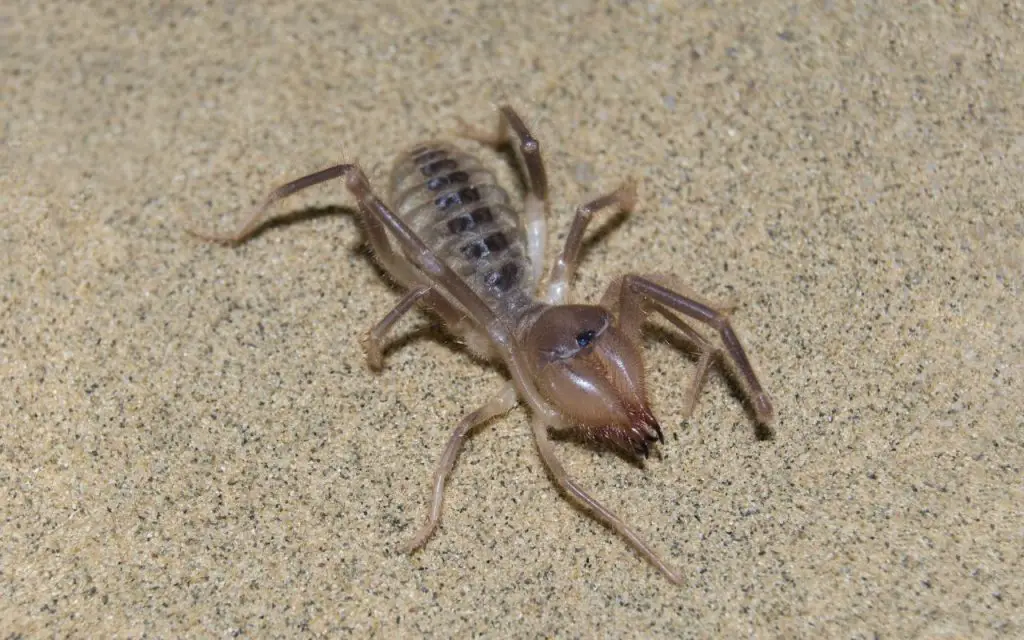
Camel spider species
Camel spiders are members of the Arachnida class, and there are currently over 1,000 known species of camel spiders. The vast majority of these species are found in desert regions, although a few camel spider species have been found in other habitats, such as rainforests.
Most camel spiders are relatively small, with adults typically measuring less than 10 centimeters in length. However, some species can grow much larger, with the largest camel spider on record measuring over 30 centimeters in length!
Camel spiders are predators, and they primarily feed on small insects and other arachnids. Some camel spider species also eat small mammals, reptiles, and even birds.
While camel spiders are not considered dangerous to humans, their large size and quick movements can be unsettling, and they can deliver a painful bite if they feel threatened.
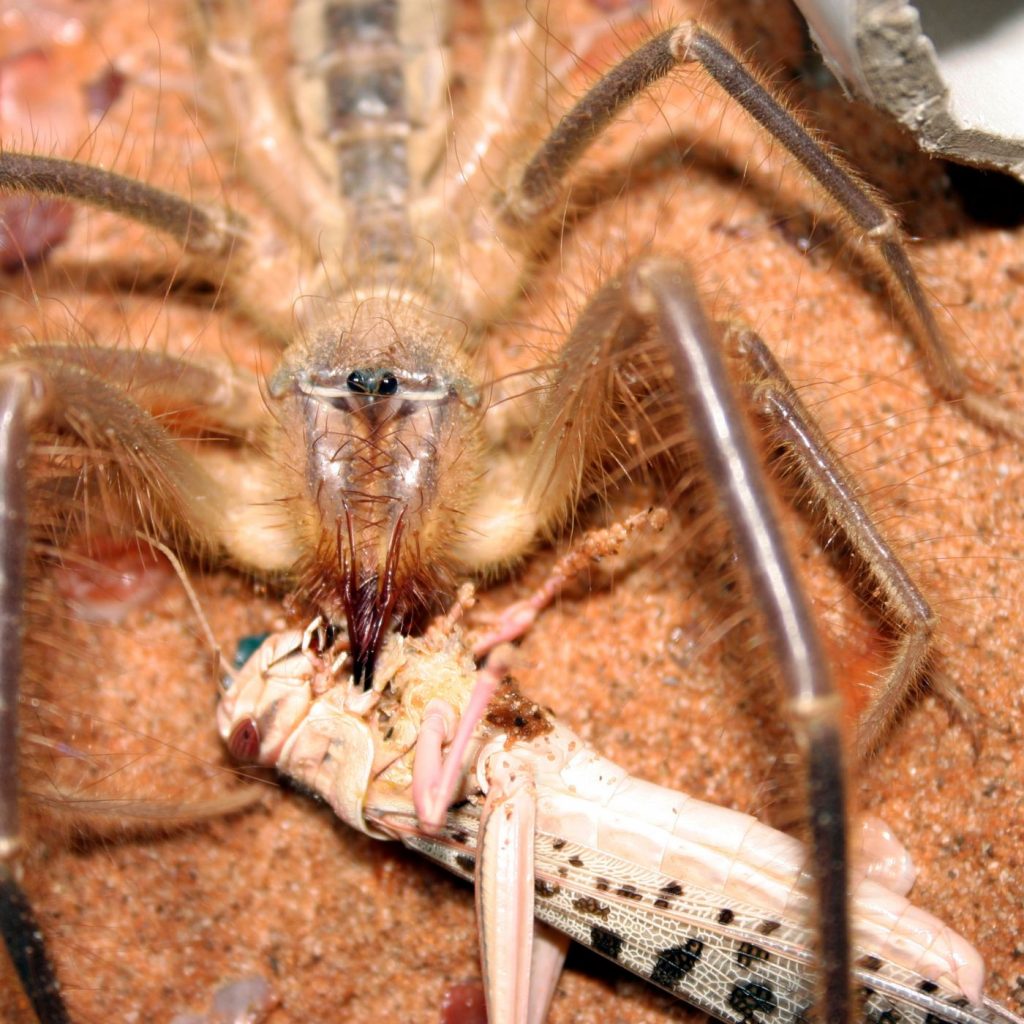
Camel spider running
Camel spiders are excellent runners. They can sprint at speeds of up to ten miles per hour (mph) and leap up to three feet in the air.
Camel spiders are also known for their ability to climb walls and ceilings. They use their long legs and sharp claws to grip onto surfaces and pull themselves up.
Camel spiders are not venomous but can deliver a painful bite if they feel threatened. Camel spiders are opportunistic predators that will ambush their prey or chase it down. Having very good eyesight, they can see prey from far away and pursue it.
What do camel spiders eat?
Camel spiders are predators that mostly eat insects, although they have also been known to eat small reptiles, rodents, and birds.
They use their powerful jaws to crush their prey before devouring it whole. Baby camel spiders are born alive and can eat solid food immediately.
They typically eat insects, although they have also been known to eat small reptiles, rodents, and birds. Camel spiders are not venomous, but their bite can be painful to humans.
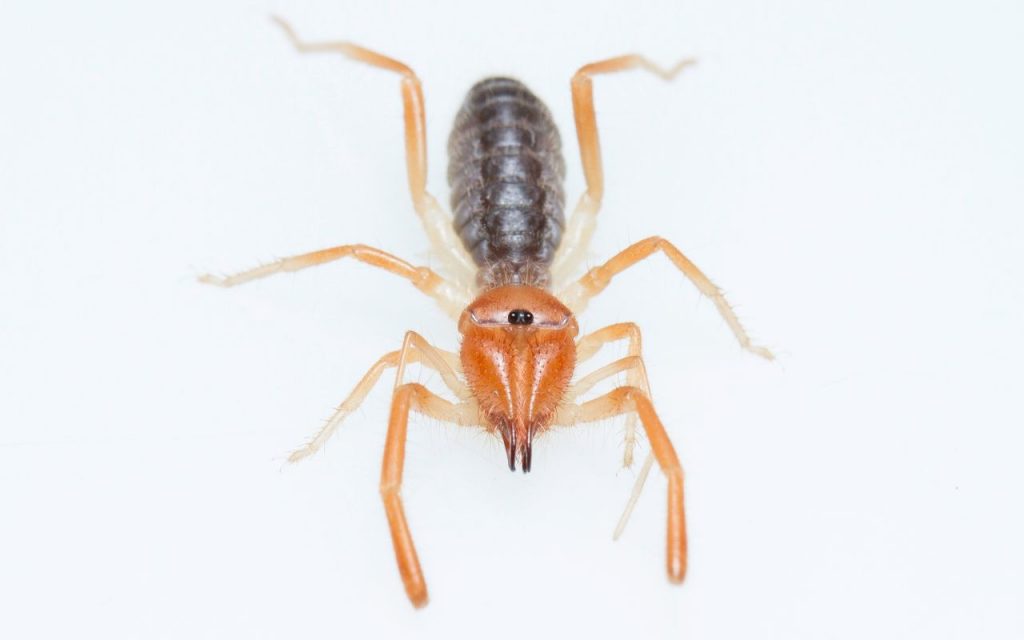
What is the natural predator of a camel spider?
There is no definitive answer to this question, as camel spiders have several potential predators depending on their location. Toads, scorpions, and bats are a few of the camel spiders’ predators.
At night, these three predators are active. They are thus active at the same time as camel spiders are out looking for food. When a camel spider is nearby, a bat using echolocation may find it and fly down to grab it. A camel spider could be overpowered by a scorpion and eaten.
Desert toads may grow to be as large as camel spiders or even bigger. They may thus capture and consume one of these spiders. The threat of starvation is quite real for camel spiders. If they cannot find food in the desert and cannot store any fat, they may perish from starvation.
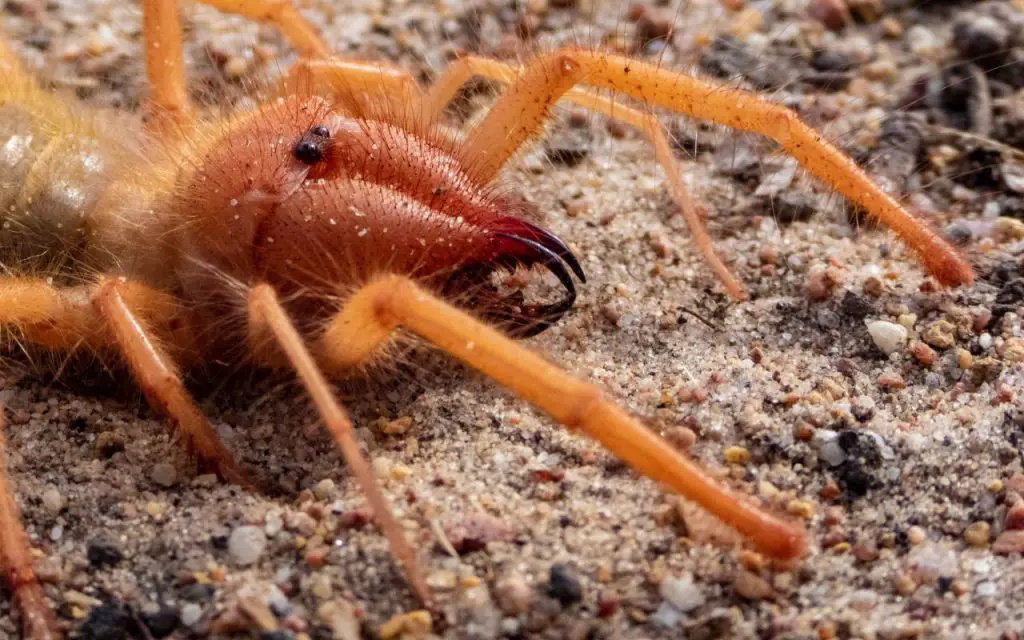
Are camel spiders poisonous?
There is no poison or venom in camel spiders. These Arachnida spiders are also known as Egyptian solpugids, wind scorpions, and sun spiders.
But they do not pose a danger to people, unlike scorpions and most spiders. The camel spider has two arachnid-specific appendages: chelicerae and pedipalps.
Chelicerae are piercing, pinching organs that may or may not have very small teeth. They can grab, shred, and cut through prey. Although scorpion chelicerae are longer, camel spider chelicerae are much more potent.
Camel spiders are also capable of stridulation, the hissing or chattering sound produced by rubbing two stiff chelicerae together. Camel spiders can give a painful bite. They are not aggressive and will usually only bite if they feel threatened.
The symptoms exhibited in camel spider bite
- Blood loss
- Severe pain
- Tenderness and inflammation
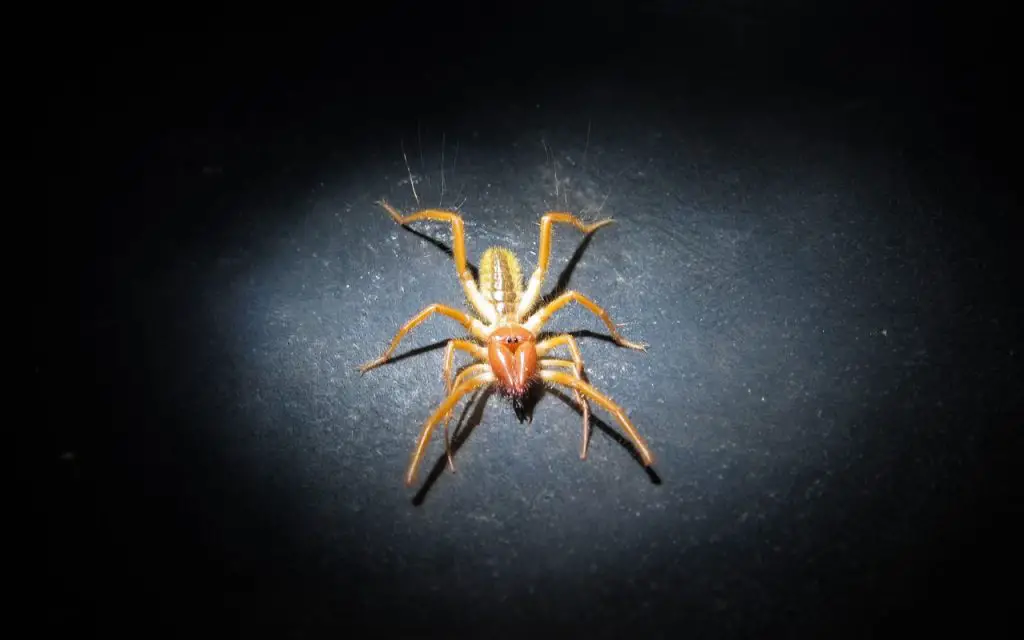
Can camel spiders climb glass?
Camel spiders are not known to climb glass, but they can theoretically climb walls, ceilings, and even glass. Only solifuges have what are adorably referred to as suctorial organs: small suction cups on the extremities.
They can grip onto their prey with the aid of these and scale vertical objects like plant stems, buildings, and even glass.
FAQ relating to where the camel spider lives
Do camel spiders live in America?
Camel spiders are found in the Middle East, Africa, and southern Asia deserts. They are more of a rarity in America.
There are no confirmed sightings of camel spiders in America, although there have been some unconfirmed sightings in the southernmost parts of the country.
Camel spiders are found in many arid regions worldwide, including the southwestern United States.
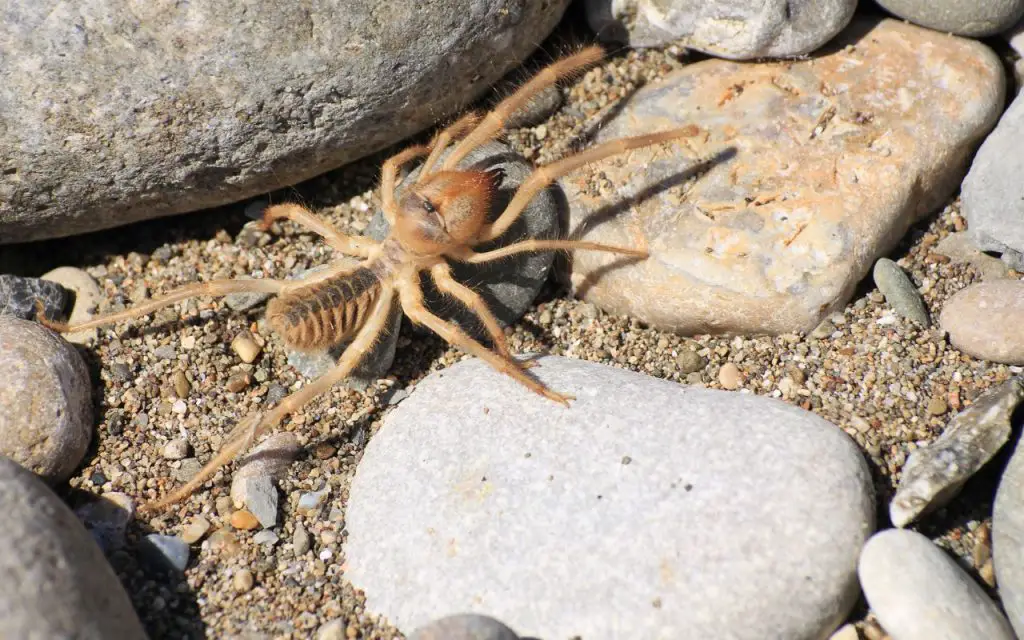
Do camel spiders live in Arizona?
If you reside in Arizona, you may or may not have encountered a camel spider since there have been no verified sightings in America. However, there have been some unverified sightings in the country’s southernmost regions.
Camel spiders are indigenous to Arizona’s deserts. However, they may also be found in other dry regions. These arachnids are found in deserts all around the globe, including the American Southwest, Africa, Arabia, and Australia.
The camel spider creates its underground burrow as its place of residence. The spider will reside in this burrow and deposit her eggs there.
What regions do camel spiders live in?
Camel spiders may be found all over the globe, although they are most prevalent in the deserts of America and Africa. They are also found in other hot, arid regions, such as the Middle Eastern deserts of Arabia, Iran, and Afghanistan.
Imagine a desert or scrubland as the habitat of a camel spider. The camel spider prefers hot, dry climates. This includes areas in Mexico, the Middle East, and the southwest United States.

